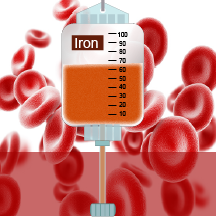Iron infusion: Uses, benefits, and what to expect
As a healthcare practitioner I am used to seeing women with really low iron, due to various gynaecological conditions.
Many women do not even know they are low in iron until they get bloods tests to show that they are. Being low in iron can be very dangerous for a woman on so many levels.
Many women who are suffering from fatigue are actually low in iron.
Symptoms of low iron can include
Fatigue
Dizziness
Fainting, or feeling of feeling faint
Pale skin
Breathless
Frequent headaches
Palpitations, or racing heart
Easily irritated
Difficulty in concentrating
Cracked, or reddened tongue
Loss of appetite
Strange food cravings
Risk Factors For Low Iron
Heavy menstrual bleeds
Endometriosis
Adenomyosis
Fibroids
Coeliac disease
Inflammatory Bowel Disease
Pregnant and Breast Feeding Women
Certain Cancers
Vegetarians and Vegans
Girls going through puberty
Certain illnesses
Sometimes when Iron gets too low, supplements just will not be enough to get iron levels up to where they should be quick enough. This is where iron infusions can be very effective.
So what is an Iron Infusion?
An Iron infusion is when iron is delivered via an intravenous line into a person’s body.
Increasing the amount of iron a person has in their blood can cure anaemia, or increase a low red blood cell count.
The body uses iron to make hemoglobin. Hemoglobin is an important part of red blood cells and helps carry oxygen around the body.
If a person does not have enough hemoglobin, they can feel tired, or have symptoms mentioned previously. An iron infusion may be used for someone with an iron deficiency when supplements do not work.
As discussed before, there are a variety of medical reasons can cause low iron levels, so your doctor, or healthcare specialist will order iron studies and other tests to see what may be causing someone to be deficient in iron.
An iron infusion may be given if a person’s blood counts are so low that taking iron supplements or increasing their daily intake of iron-containing foods would be ineffective or too slow in increasing their iron levels.
What to expect
A person will go to a doctor’s office, hospital, or another healthcare facility to have an iron infusion. This is done intravenously and the infusion will take between 15-30 minutes if it is given in amounts of 200-300 milligrams (mg). In days gone by iron infusions would take hours to do and would have to be done in a hospital setting.
The new rapid iron infusions allow iron into the body much quicker and have little to no side effects compared to the older solutions that took hours to administer and were not as good as the new versions used now.
What happens after an iron infusion?
An individual can experience some mild side effects after an iron infusion. The symptoms are usually mild side effects such as headaches, metallic taste in the mouth, or some mild joint pain. Some people can feel faint and nauseas after an infusion but this is usually people who do not tolerate having blood taken, or having needles given. Reactions to infusion are rare, but your healthcare provider will explain all this too you. There are some people who may be allergic to iron, just like people can be allergic to certain foods.
Most people will only need one infusion done, but sometimes people with very low iron may need multiple infusions done. This will be after careful monitoring and testing to see where your iron levels are.
Usually iron levels will return to normal and symptoms of iron deficiency will decrease several weeks after the infusion. A doctor will regularly check the person’s iron levels and blood counts to ensure the iron infusion is working.
Iron infusion vs. injection
Doctors can administer iron to someone via an injection or an infusion.
Iron injections are given intramuscularly, but while iron injections may be faster than iron infusions to administer, they can have some unpleasant side effects. Some of the side effects can be pain at the site of the injection, bleeding into the muscle, and permanent discoloration at the injection site. This is why more doctors are now recommending iron infusions over the injections
Before and after the Infusion
Most people do not need to fast or stop taking their medications beforehand, and can also resume their everyday activities after an iron infusion.
If a person is taking regular iron supplements, however, a doctor will usually tell them to stop taking these about a week before the procedure. This is because the supplements may prevent the body from absorbing the iron from the infusion efficiently.
A person will need to resume iron supplements at some stage after the receiving iron infusions, t ensure levels stay where they should be. Your healthcare provider will tell you when to do this.
People who have a genetic issue called haemochromatosis should not ever have an iron infusion.
Iron infusions are now being used more and more, when iron levels are low and people are not responding to supplementation and adjustments to their diet. I recommend them to many of my patient who have low iron due to many varying reasons. Like I said said before, many of my gynaecology patients, fertility patients and pregnancy patients have very low iron levels and will actually need an infusion to get their levels up quickly.
If you are feeling tired, lethargic and may be at risk of low iron, have a talk to your healthcare provider about finding out if you are low in iron and also discuss having an iron infusion if your levels are really low. Your healthcare practitioner may not know about the new iron infusions and that they are now a great option to use and have very little side effects compared to the older methods and solutions. Some GP clinics now specialise in administering iron infusions too.
Regards
Andrew Orr
-No Stone Left Unturned
-Women’s and Men’s Health Advocate



Pingback: Why Iron Deficiency and Anaemia Should Be Take More Seriously -
Pingback: The Serious Health Complications Of Low Iron -